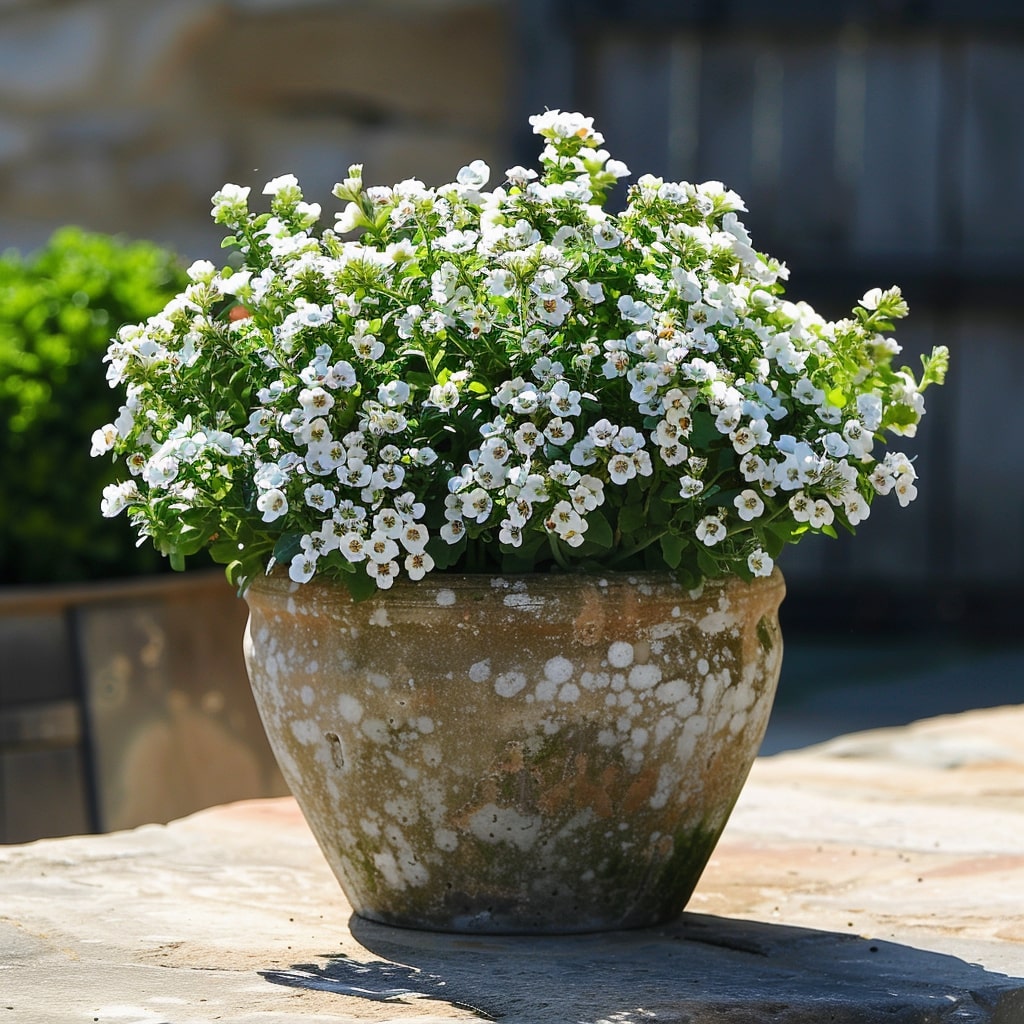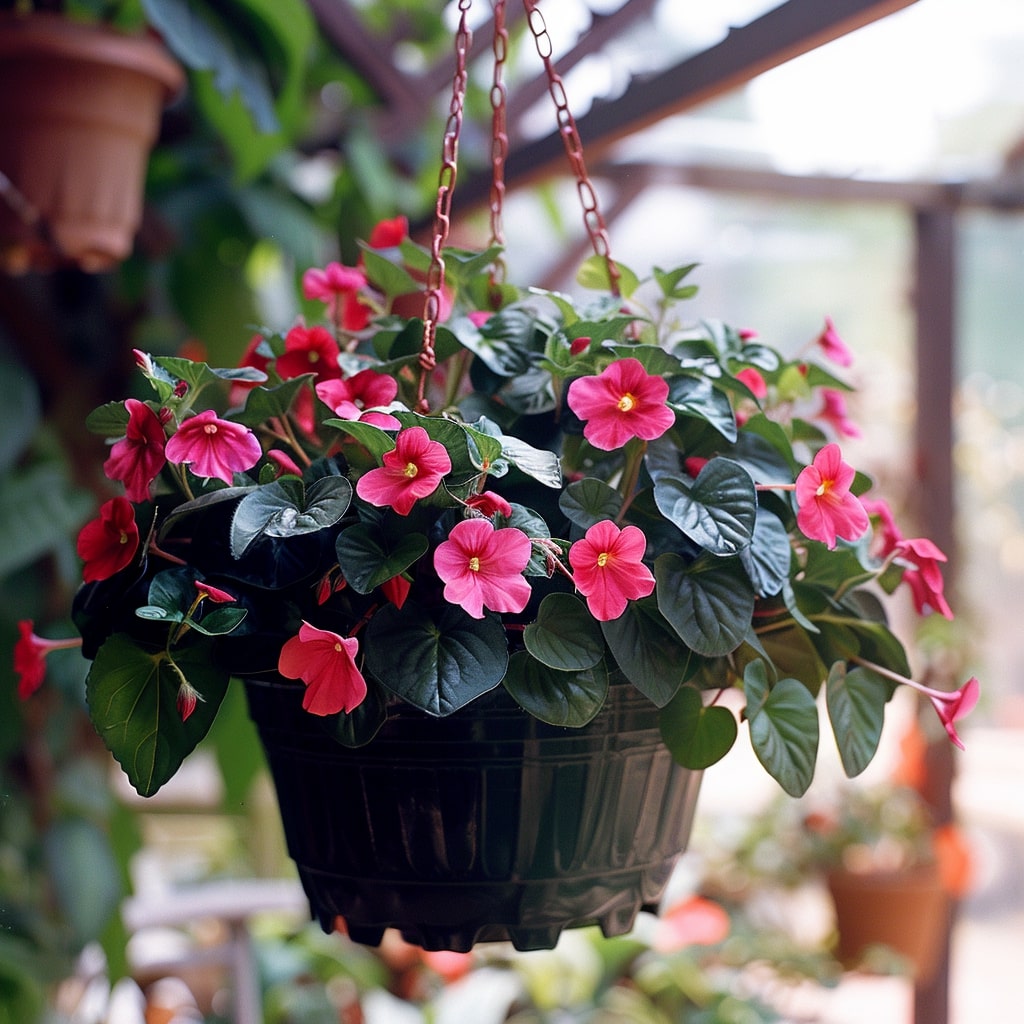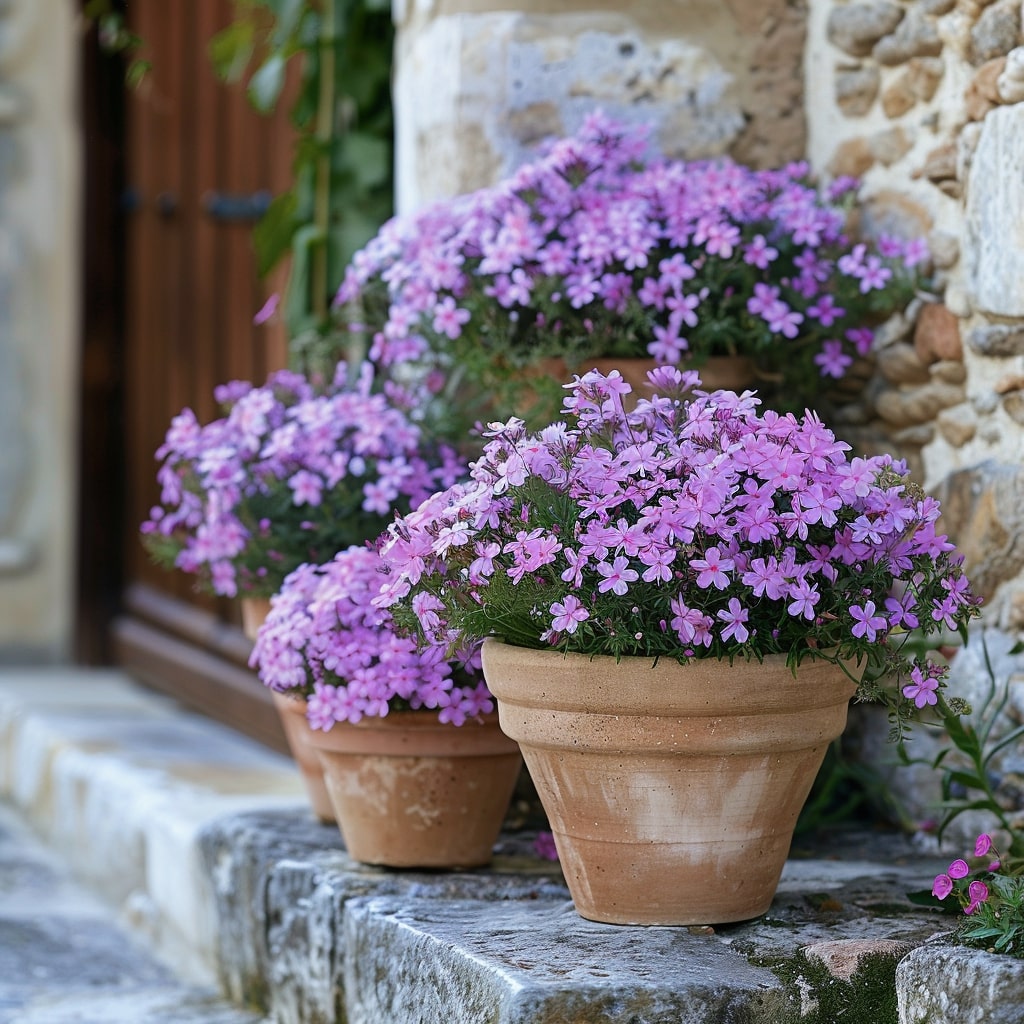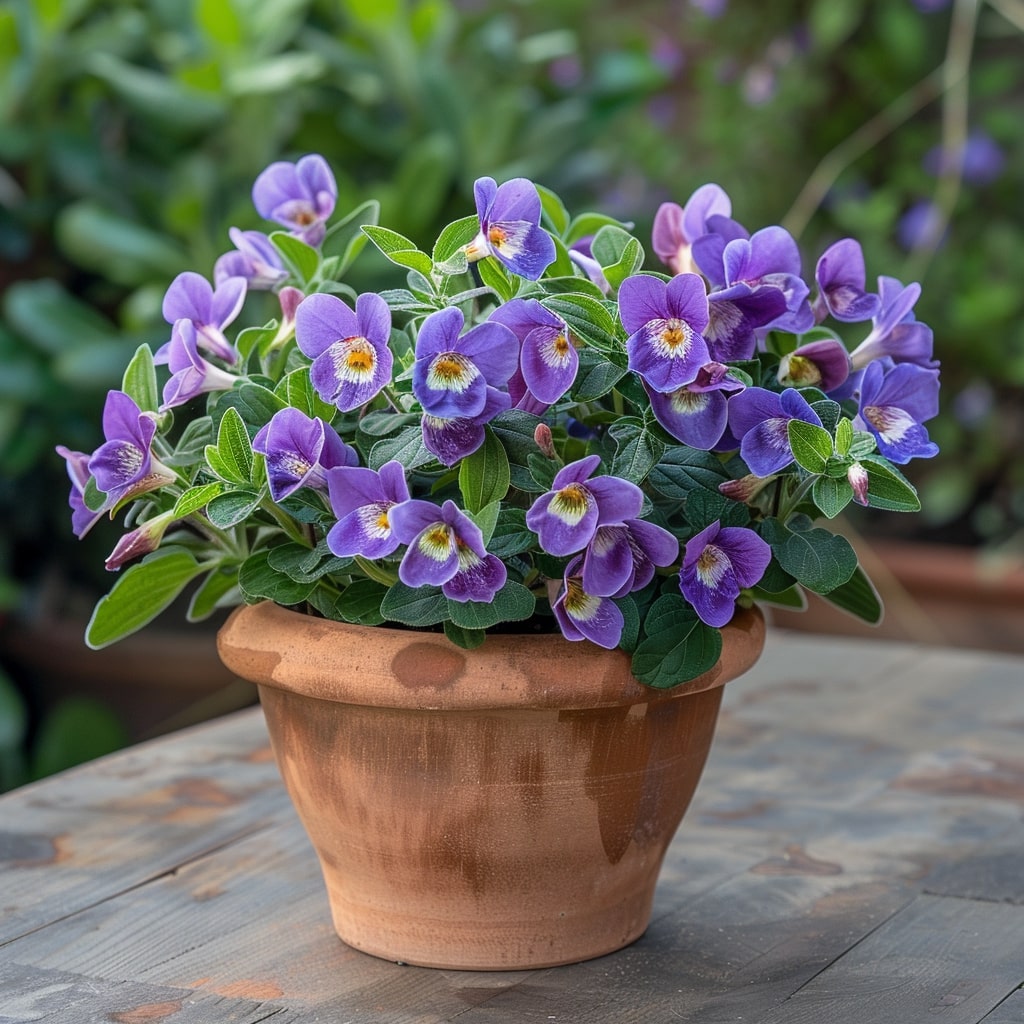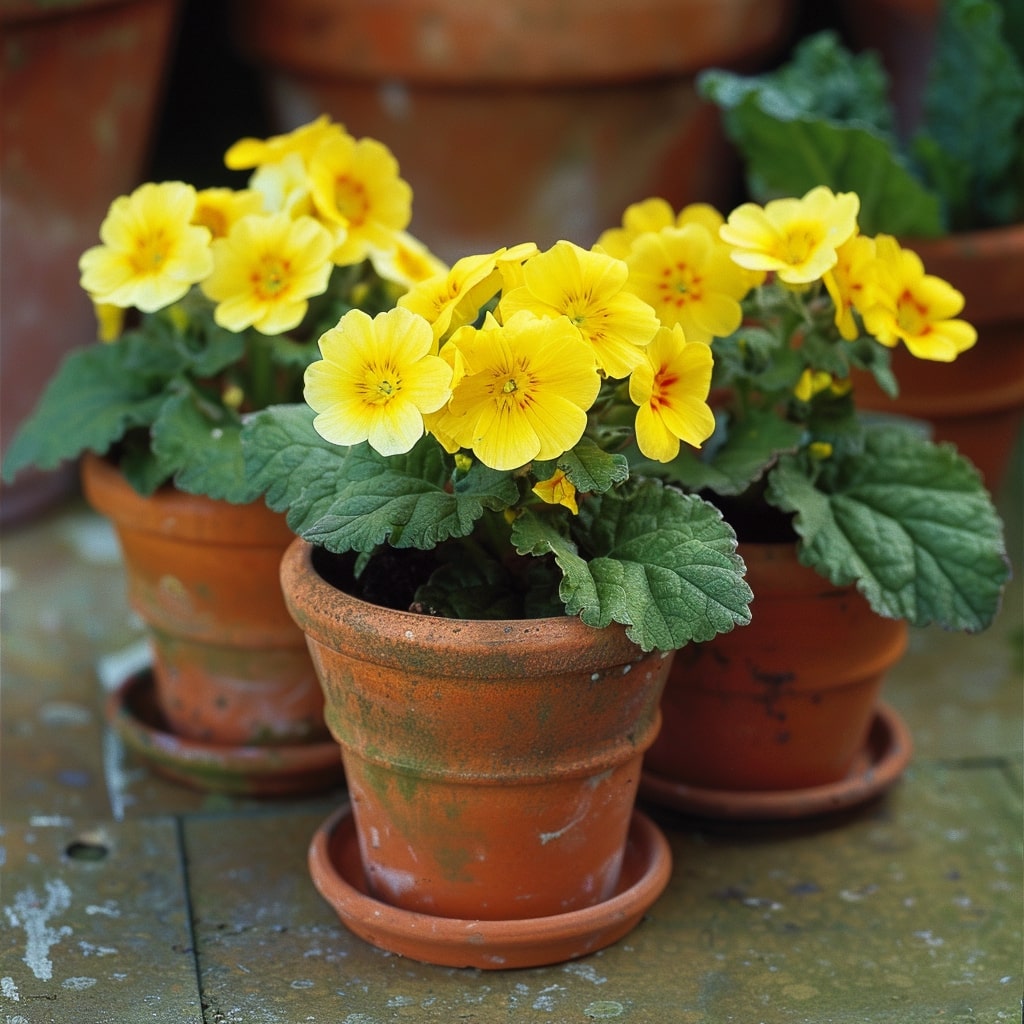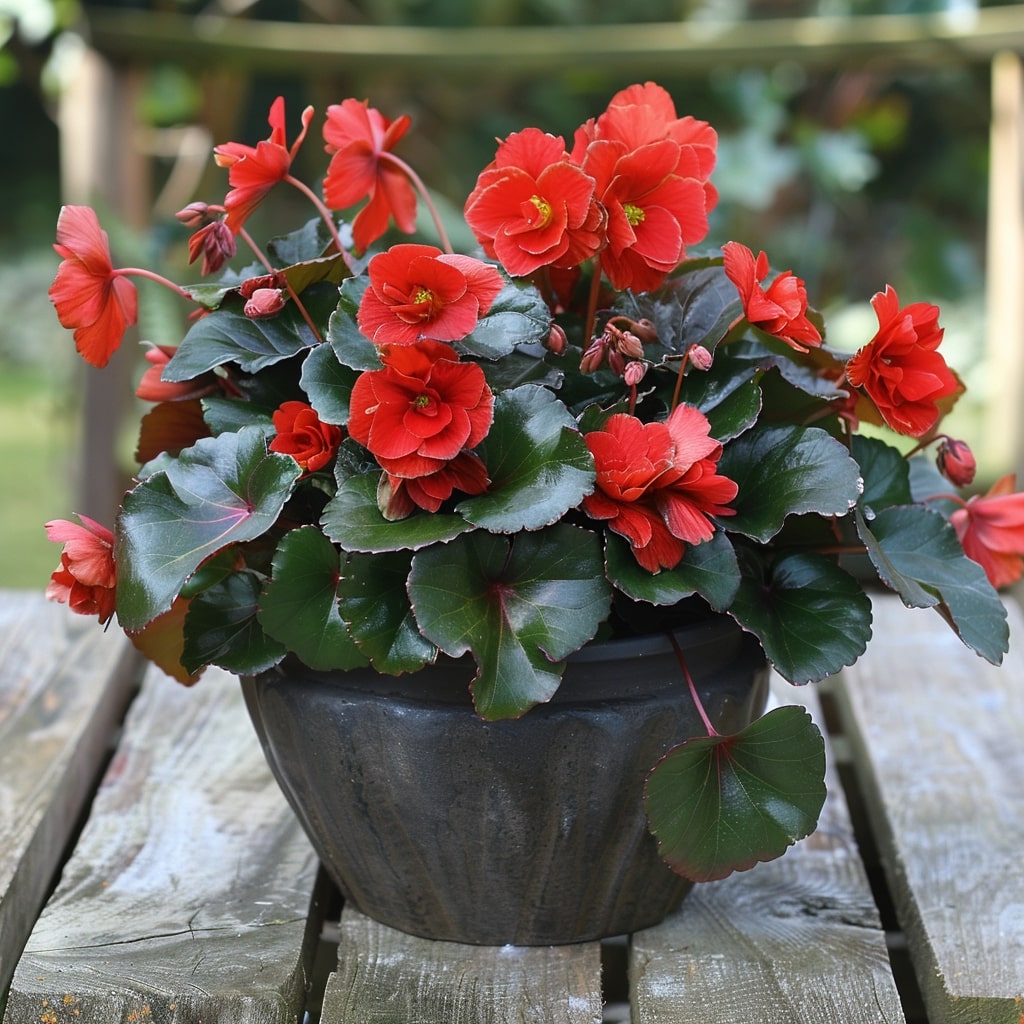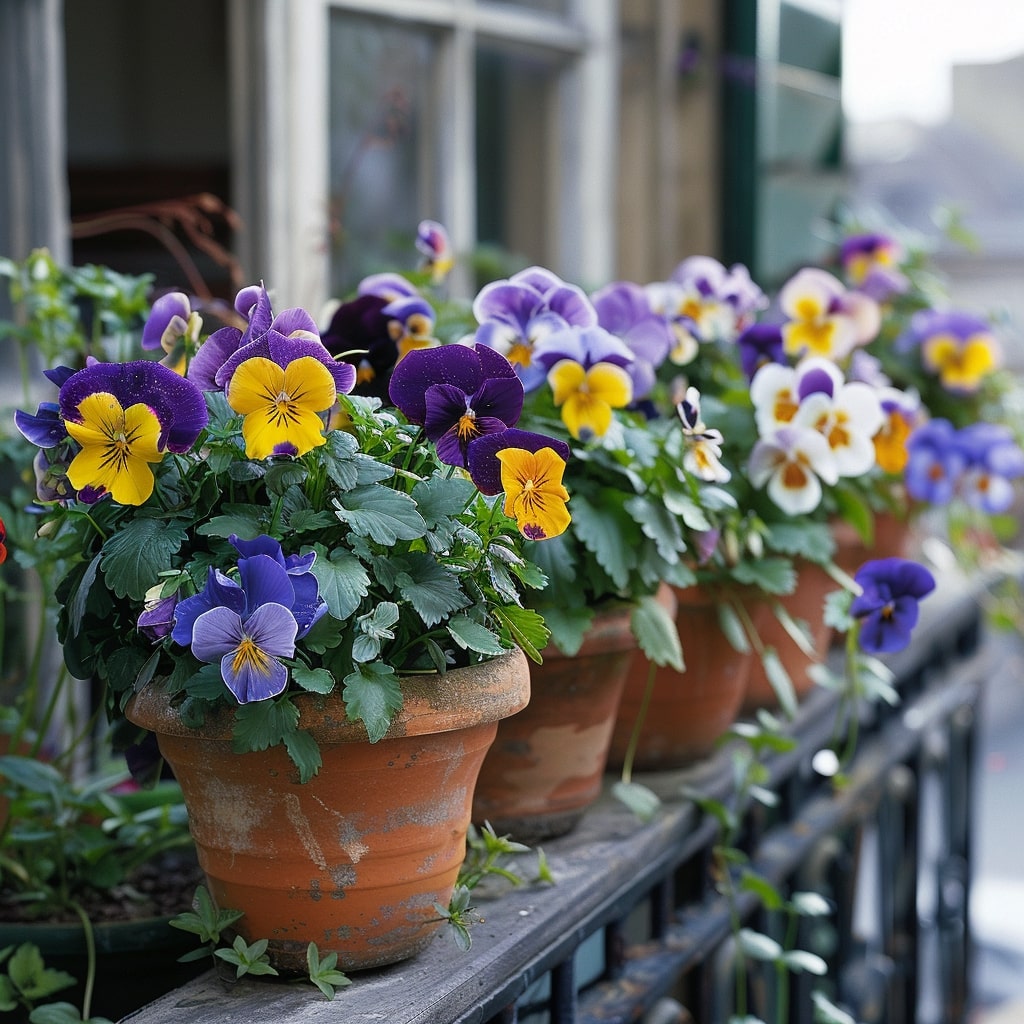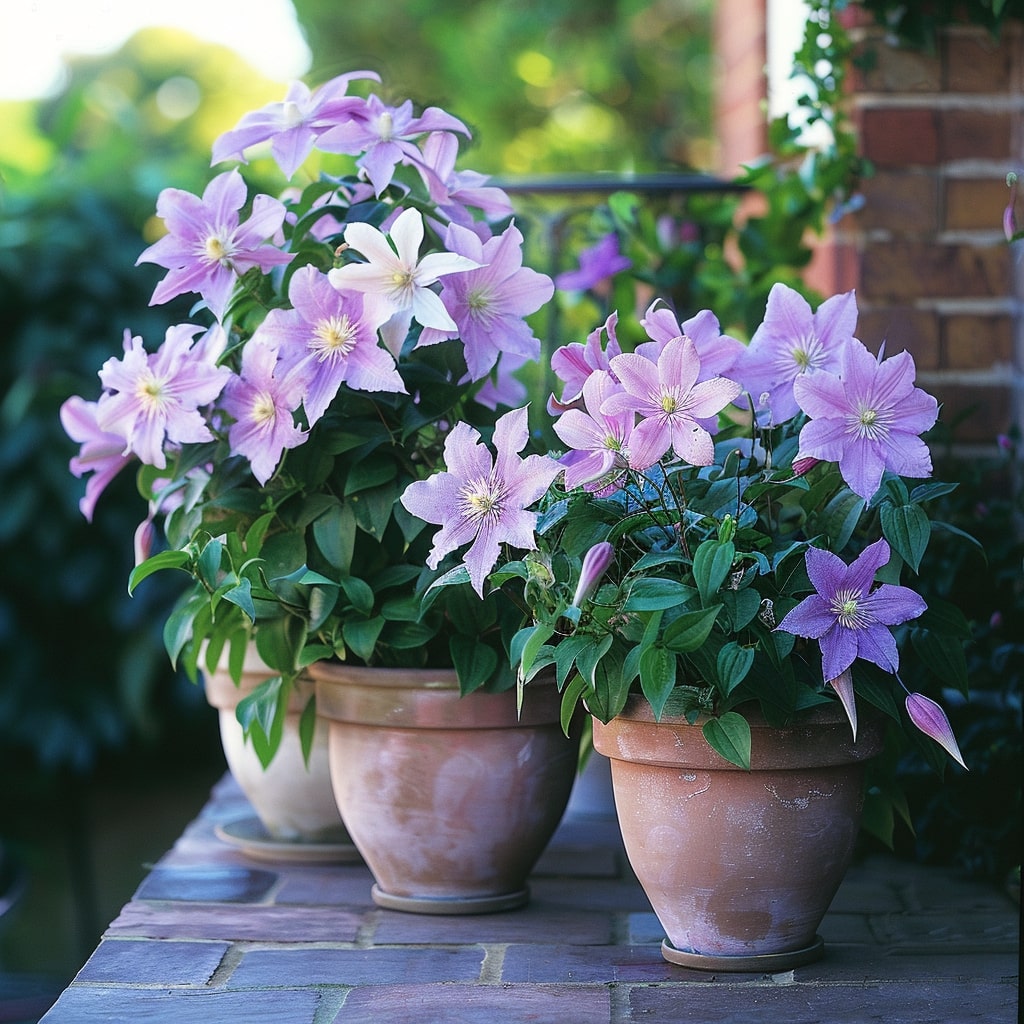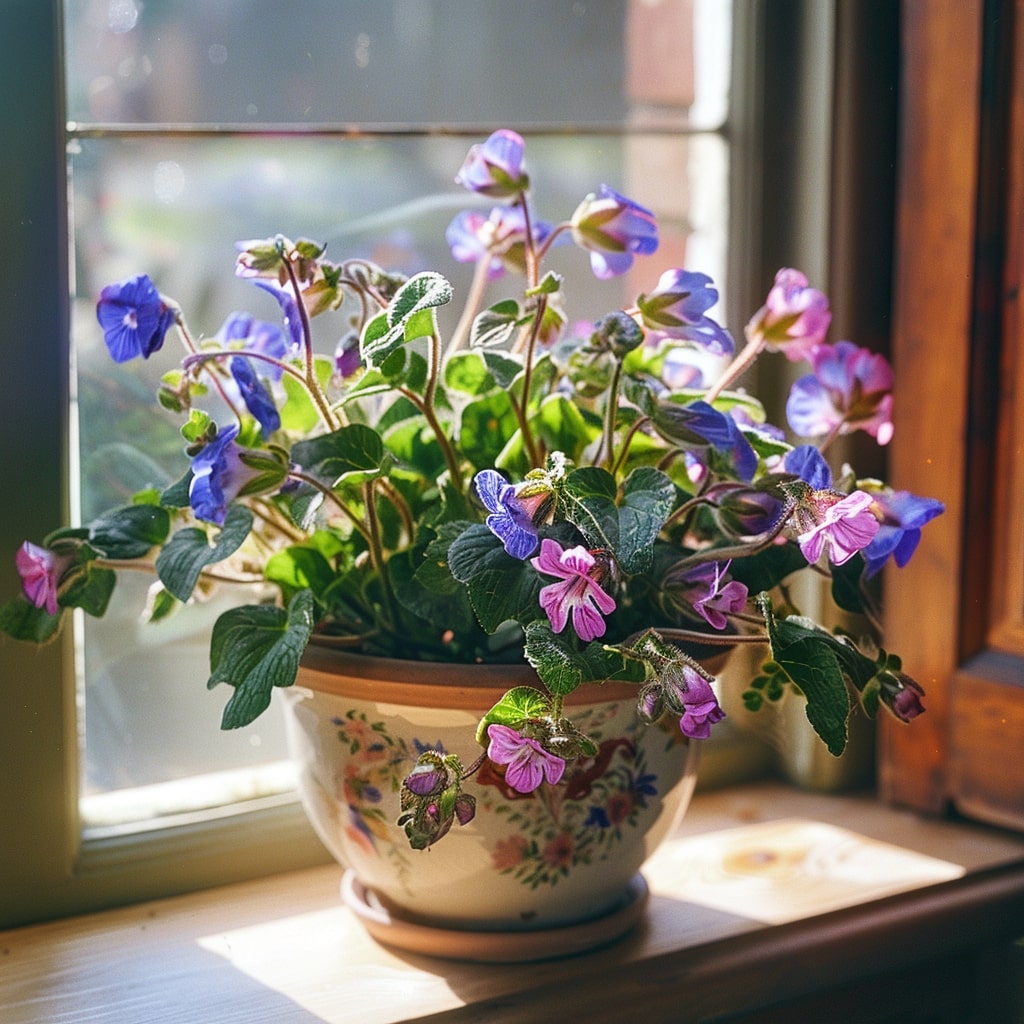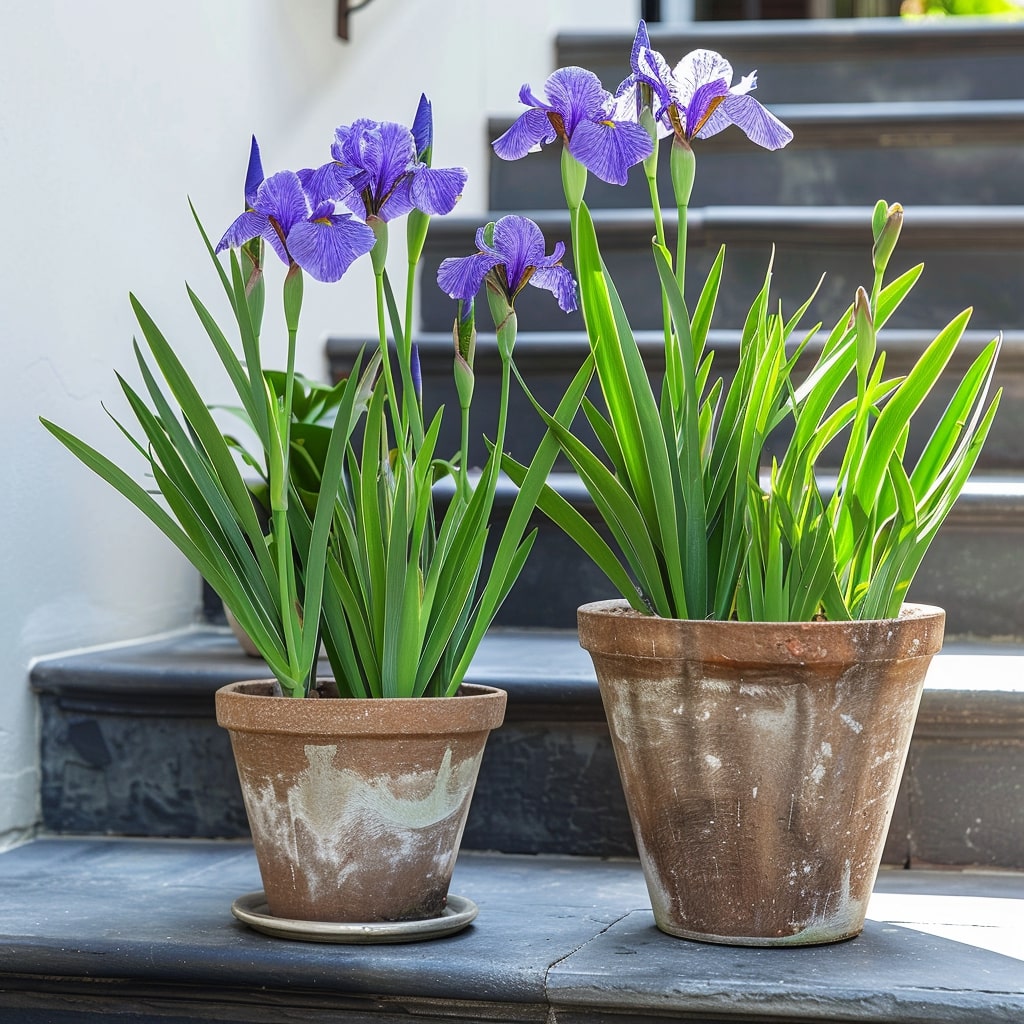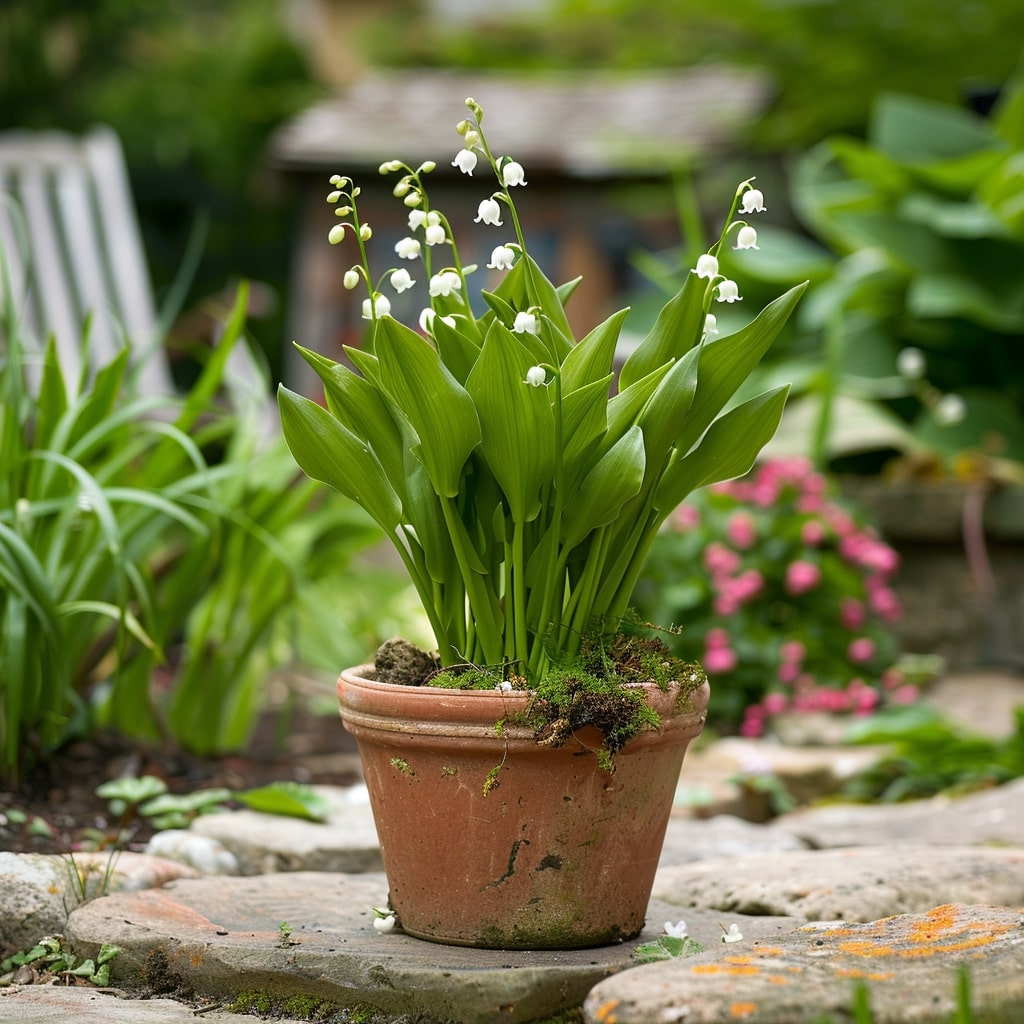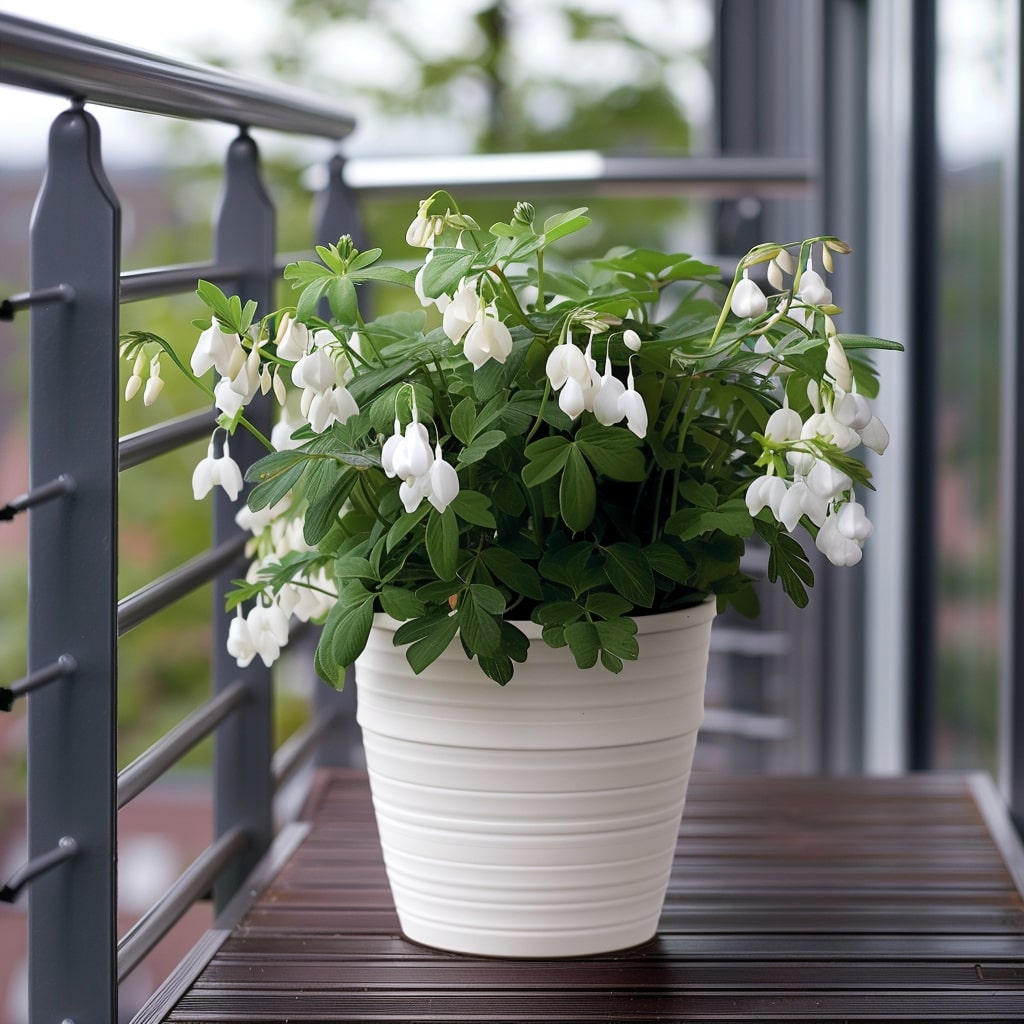Love the look of colorful flowers but don’t have the soil space for an expansive garden? Planting in pots might just be the perfect solution.
Depending on your location and budget, there are plenty of different ways to design and organize your container garden.
The flowers on this list are tolerant to areas with less sun and little to no garden space, such as apartment balconies, small backyards, or even vacant driveways.
Here are 23 bright and cheery shade flowers for pots that can thrive in partial sun or shade outdoors.
1. Sweet Alyssum (Lobularia maritima)
Ideal for planting in upright containers, garden bedding, or hanging baskets, the honey-scented flowers of sweet alyssum are native to the Mediterranean, Canary Islands, and the Azores.
These flowers are part of the mustard family and boast dense clusters of small blossoms. They continue growing for long periods of time, even year-round in some mild climates without frost.
Thanks to the sweet alyssum’s small, sweet-smelling flowers, their fragrance attracts pollinators like bees and butterflies, but also tiny insects that are beneficial to biodiversity. They are especially easy to grow from seed and do well with partial shade in hotter climates.
2. Lobelia (Lobelia spp.)
This flowering plant comes in shades of purple, white, and blue that fall nicely over the rims of containers. While it can tolerate full sun in cooler climates, it prefers partial shade and tends to show off its flowers before evening temperatures become too warm.
Even better, these annuals (technically herbs) will grow pretty much anywhere due to their compact nature, and many will continue to bloom from mid-summer up through the first frost of the season.
Once they’re established, potted lobelia plants require very little maintenance, though they may require more frequent watering during particularly hot or dry periods.
3. Impatiens (Impatiens walleriana)
Many gardeners consider impatiens to be their go-to annual for shady areas due to their low maintenance and resiliency. Impatiens goes by many different names, including Touch-me-not plant, busy Lizzie, patient Lucy, and sultana.
They have been hybridized enough to offer a variety of colors, foliage, and blossom shapes to choose from. Keep these flowers out of direct sunlight, instead opting for an area with well-draining potting soil and light to medium shade (although some varieties may tolerate more sun if their roots are kept moist).
Keep in mind that while the plants do well in shady spots, they’re quite sensitive to cold temperatures when first starting out.
4. Creeping Phlox (Phlox stolonifera)
Creeping phlox plants come in a range of colors, but most commonly shades of purple, pink, blue, and sometimes white.
Their flowers grow low to the ground in tight clusters and give off a mildly-sweet smell, and the plants will easily spread to cover every nook and cranny of your container.
That’s why many gardeners choose to keep their creeping phlox in pots rather than in traditional gardens or flower beds. Their blooms arrive in late spring and early summer, though they keep their green foliage throughout the year, and are both deer and rabbit tolerant.
5. Fuchsia (Fuchsia spp.)
The bright, teardrop-shaped blossoms of the fuchsia flower (an obvious favorite for hummingbirds) will droop delicately from both hanging baskets and taller ground pots.
They will happily bloom all summer long, even without much sunlight, making them ideal for the shadier sections of your outdoor space.
Native to Central and South America, fuchsias come in several different varieties and colors, though almost all of them prefer dappled shade and cooler temperatures to hotter summer temperatures and direct light. Pay special attention as new growth appears with fuchsia plants, as they will bloom more abundantly when pinched back.
Likewise, as branches finish blooming, clip them back with garden shears to keep them healthy.
6. Sapphire Flower (Browallia speciosa)
Part of the nightshade family (which includes plants like eggplants, tomatoes, and potatoes), this annual plant varies in colors of white, purple, and blue that come alive in shaded to partially shaded areas.
If you’re trying to fill smaller pots or containers, look for one of the dwarf varieties—though even the common-sized ones will only grow to about 12 to 16 inches.
Also, keep in mind that browallia flowers don’t produce a scent, so consider another option on this list if you purchase plants specifically for their fragrance.
7. Miss Piggy Flower (Bergenia cordifolia)
With a nickname like “miss piggy flower,” it should come as no surprise that the bergenia cordifolia is known for its delicate pink flowers.
These plants are also known as “pigsqueak” due to the noise produced by rubbing their leaves between your thumb and finger.
They bloom from early to mid spring, boasting dark green and shiny foliage that stick around long after the last flowers are gone. They’re tolerant of a wide range of soils, but prefer moist, well-draining ones.
8. Bush Lily (Clivia miniata)
Although these potted shade flowers have established a more popular reputation as houseplants, bush lilies will also bloom outdoors in the spring with a little extra care. Outside, they require soil that drains very well and a spot that’s at least partially shaded.
They will also benefit from a small amount of morning or dappled sunlight. Their trumpet-shaped flowers are typically orange in color; some rare yellow varieties are harder to find and more expensive than their orange counterparts.
According to the director of Ornamental Plant Research at the Chicago Botanic Garden, clivias are slow-growing and difficult to propagate, so it’s best to purchase a mature plant if you don’t want to wait a few years for it to bloom.
9. Wishbone Flower (Torenia fournieri)
Also known as the wishbone flower thanks to its uniquely-shaped stamen, Torenia fournieri is a wonderful option for shaded containers due to its long blooming season.
Gardeners should look for a light pot with plenty of drain holes for these plants, keeping them protected from the hot afternoon sun (though they can tolerate some, occasional direct sunlight).
Or, pair the plants with a combination of small ferns or coral bells for a bit of variety. The trumpet-shaped blooms will also attract hummingbirds and resist deer.
10. Common Primrose (Primula vulgaris)
Primrose are found in the wild among woodlands, but also do well in containers in shaded spots with two to three hours of sunlight per day. These cheerful flowers, which are mostly found in pale yellow colors, are one of the first signs of spring.
Primroses prefer consistent moisture when it comes to soil, as well as cool summer temperatures and protection from the hot afternoon sun. In Irish folklore and mythology, placing primrose flowers in the doorway helped protect the home from fairies.
11. Wax Begonia (Begonia x semperflorens)
A popular plant for flower beds that produce clusters of fleshy blossoms through summer and into the fall, wax begonias are a sturdy and durable choice for your shaded containers.
The plants are slow-growing at first when planted from seed and can take months to mature, and can also be successfully cultivated as indoor plants or in windowsills. They are suited for tropical regions and can therefore handle warm or humid growing conditions, reacting poorly to the extreme cold.
12. Pansy (Viola x wittrockiana)
On the other hand, pansy flowers are fast-growing and tolerant to colder conditions. Their heart-shaped, bright-colored petals surround center markings that are often compared to little faces, earning their reputation as one of the most cheerful flowers.
Pansies would grow very tall—about five to eight inches—in groupings closer to the ground. Common garden pansies are a mixture of several different species, including violas, and were considered a weed up until the 19th century.
13. Nelly Moser (Clematis lanuginosa)
These popular flowers bloom in late spring to early summer and then again in the late summer to early fall. They thrive in well-draining soils that are kept moist and partly shaded.
The unique star-shaped flowers are pale in color with a darker stripe down the middle of the petals. Nelly mosers can handle some full sun but thrive best in partial shade, growing quickly up to 10 or 12 feet long.
Some varieties also prefer to keep their heads in the sun and roots in the shade. These hardy vine plants are a good choice for trellises and can be pruned to climb walls or fences, though they’re also great for containers.
14. Oakleaf Hydrangea (Hydrangea quercifolia)
Unlike other types of hydrangeas that require several hours worth of sun per day, the oakleaf hydrangea can easily bloom in full shade.
These plants grow longer, more tube-shaped flower clusters rather than the traditional round clusters of blooms for which common varieties of hydrangeas are known.
They are quite tolerant of different growing conditions, and their green foliage will fade to darker shades of purple and red in the fall. Good for hedges or shrub borders as well as larger containers, oakleaf hydrangeas can reach six to eight feet tall and wide.
15. Lungwort (Pulmonaria spp.)
Funnel-shaped lungwort flowers range from blue and purple to white and pink. Growing best in shaded spots, their leaves are fuzzy, spotted, and green, with fast-spreading roots that require adequate water and shade to stay resilient.
The spotted leaves helped give it its common name, as Medieval herbalists once believed the plant to be effective in treating lung disease. Although these plants are often chosen for their foliage, the flowers will be some of the first to bloom in the early spring.
16. Begonia (Begonia spp.)
Begonias have been used to brighten up dark corners for a long time. They are excellent shade-loving container plants with beautiful foliage and very colorful flowers.
Trailing begonias like the ‘Hanging Basket’ cultivars (available in apricot, salmon, white, pink, red, and yellow) will create a cascade of vibrant flowers that lasts for months. Most begonias like partial shade but will do well in full shade, maybe with slightly reduced blooms.
However, varieties like ‘Garden Angel Silver’, ‘Gryphoon’ (cane begonia) and Bolivian begonias (Begonia boliviensis) will be as bountiful with their flowers in partial as in full shade.
Their blooms will usually start in late spring and keep bringing your containers to life with their flowers till the first frost. This makes them ideal for low maintenance gardens, especially traditional and informal gardens.
17. Roast-Beef Plant (Iris foetidissima)
From a common container plant for shade to a lesser known flower: roast-beef plant. It is also called stinking iris, but don’t worry… It has an unpleasant smell only when you crush the leaves. If you do, they will smell of beef. But in a container, on a terrace or patio, this iris is stunning!
Like all irises it has standards (the top sepals) and falls (bottom sepals). The standards of stinking iris are thin and upright. The falls are white with amazing purple veins, and the edges turn to light lavender violet.
Winner of the Award if Garden Merit by the Royal Horticultural Society, this evergreen will also produce beautiful red seeds in pods that will last on the plant all through winter.
Roast-beef plant is excellent for informal settings, both in containers and in full soil, and it can grow and blossom in any light condition, including full shade!
18. Anemone (Anemone spp.)
Anemone is a classic flower for part shade or full shade positions. Not all anemones will grow without lots of light though. For example, Anemone coronaria will need full Sun. but there is a wide choice of anemones you can grow in pots even where light is little…
For example, meadow anemone (Anemone canadensis) will fill your full shade corner with candid white flowers in spring and summer. The many varieties of Anemone blanda (Grecian windflower) can bring purple, magenta, blue or white to containers in partial shade.
Japanese anemone (Anemone hupehensis) instead is better to fill your pots with brightly colored flowers later in the season. If you want an enchanting early bloomer, try wood anemone (Anemone nemorosa)…
The ‘Robinsoniana’ variety has won the Award of Garden Merit by the Royal Horticultural society thanks to is sea of pale lavender flowers… It is mostly grown in full soil, even as a carpeting flower, but it will adapt to containers too.
19. Camellia (Camellia spp.)
If you have a large container, camellias are one of the most beautiful flowers to have. With their round, soft looking flowers and their romantic look they can turn even dark spots into small corners of paradise.
You can grow camellias in full soil, but in many cases containers are the only option. In fact, you will need to keep the soil pH acidic, which is easier to do in containers. This is a plant that really loves shade, but it will fill it with beautiful large flowers and the color selection is good.
The classical ‘Alba Plena’ with more than 100 white petals and cultivated since 1797 has won the Award of Garden Merit by the Royal Horticultural Society. ‘Desire’ is so romantic, with white petals in the middle and pink on the margins.
‘Les Jury’, on the other hand, offers you the brightest crimson flowers ever!
20. Lily Of The Valley (Convallaria majalis)
For a temperate forest look, the innocent look of the lily of the valley is just perfect. It looks wonderful in dappled shade under trees, with its white bell shaped flowers hanging from ling and arching stems…
The long and upright, ovate leaves of the lily of the valley are decorative enough… But when the white flowers appear, no other small plant conveys that sense of woodland serenity as this candid beauty.
You can recreate that “Little England” look also in pots and containers on your patio or terrace with this easy to grow plant.
21. Chinese Astilbe (Astilbe chinensis)
If you want your shady corner to come alive with a sea of brightly colored plumes, choose astilbe! This very generous bloomer has massive inflorescences of small individual flowers that open in succession all through the summer months!
These hardy flowering perennials are very generous and energetic plants indeed. Their colors tend to be very intense and vivid. So, they are ideal to perk up the energy levels of dark and dull balconies, terraces, patios and porches.
Available in all the shades from white to dark crimson and purple, via pink, astilbe is a perfect choice for a hassle-free but vibrant container in the shade.
22. Dutchman’s Breeches (Dicentra cucullaria)
Bleeding heart is well suited for pots in part shade, but if you want a variety that’s perfect for containers in full shade, choose Dutchman’s breeches.
This species also has a very oddly shaped flower: it looks like two horns or, in the imagination of botanists, a pair of breeches upside down.
Snow white and with a sugary texture, the flower has small, yellow petals that open at the bottom. It is the flower you will want if you wish your poorly lit corner to look original, unconventional and fresh.
23. Primrose (Primula vulgaris)
A flower synonymous with spring, primrose is an easy to grow perennial that can live well even in small pots, and in full shade too! It is very generous with its blooms, and the choice of colors is really impressive.
In fact, you can use a palette that goes from white all the way to dark purple and dark violet.
There are prize-winning varieties too, like ‘Wanda’ an extremely deep and bright magenta flower which has won the Award of Garden Merit by the Royal Horticultural Society. Another interesting variety is ‘Perle von Bottrop’ which offers vibrant violet flowers with a yellow center.
But if you want an originally looking variety, drumstick primrose (Primula denticulata) forms globe shaped inflorescences on top of long stems which can be blue, pale violet, lilac or rich purple. This too has won the RHS Award of Garden Merit.
These 23 beautiful shade flowers for pots can transform any small or shaded space into a vibrant and thriving garden.
From the delicate blossoms of sweet alyssum to the bright, bold colors of fuchsias and begonias, there’s something on this list for every gardener and every garden.
So, whether you’re working with a shaded balcony, a small backyard, or a dark corner of your porch, these flowers will bring life and color to your containers. Happy gardening!

